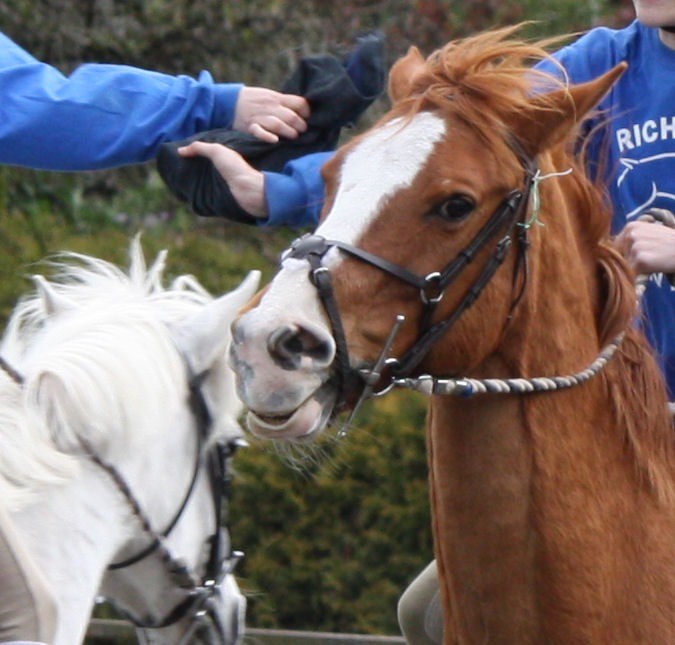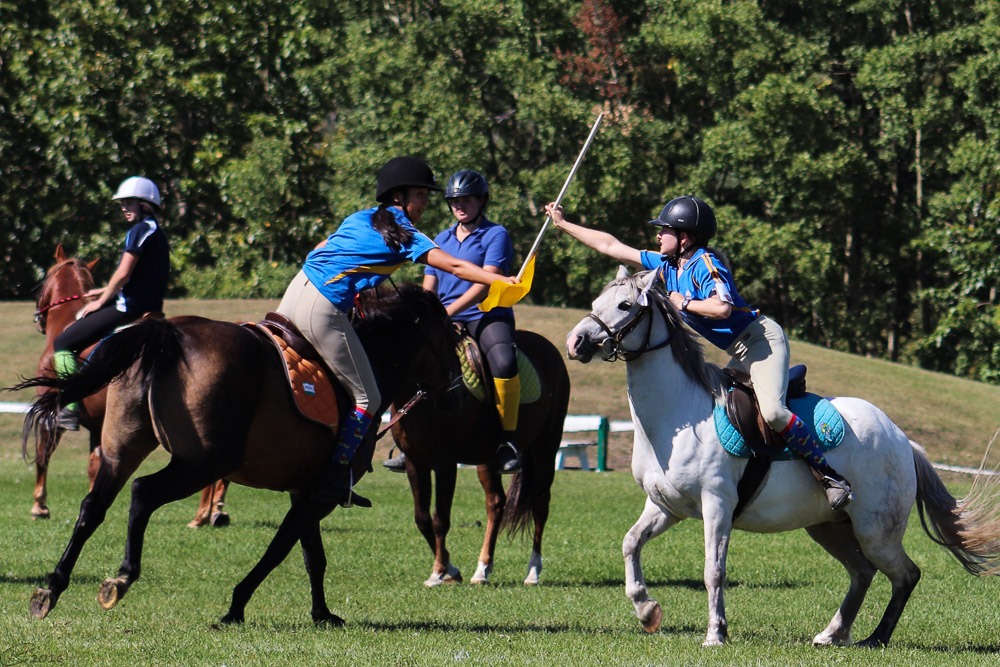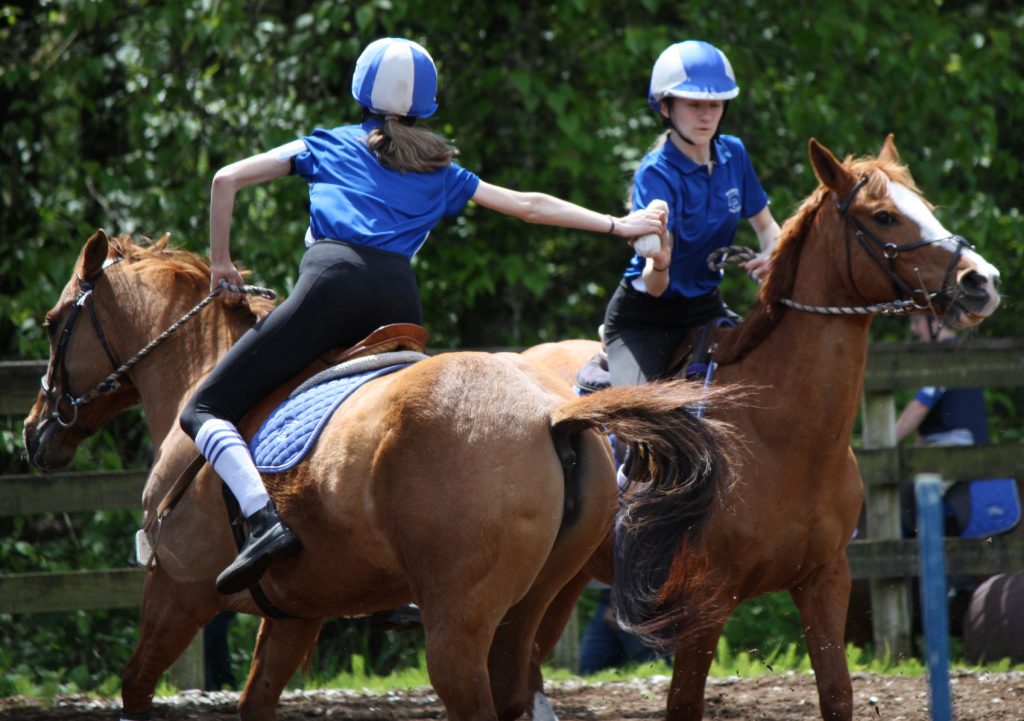Before I put swords in the hands of participants on horseback during our Intro to Mounted Combat workshop, I have people high-five each other. I tell them it's the friendly way to start hitting one another. The comment is light-hearted, but the principle and the practice is important. Co-operative riding is a key part of mounted combat.
Learning to control your measure and speed, getting up close to other horses, and matching your pace with other riders, are all vital skills during combat. Which is why cavalry throughout history have practised formation riding and drills, and why we include Prix Fiore tests and team riding in our program.
Level 4 Riding: Team Riding
You have been practising team riding since the beginning of the program, though you might not have noticed. Points of assessment such as maintaining safe distance, cantering in a group, and turning in parallel across the arena have shown up in Levels 1 through 3. At Level 4 we put a name to it, and from this point on have a team riding assessment at each level. For this one it's:
14. Team Riding. Hand-off on lists or in circles, walk & trot.
If you have done mounted games, chances are you've handed off objects, where they were batons, balls, swords, or mugs. The hand-off usually involves one rider waiting at the start line while the other rider comes at a walk, trot, or full-out gallop, depending on the level being played.
A Complex Skill
For your assessment, both riders will be moving and you will need to demonstrate hand-offs at walk and trot. This demonstrates your ability to
- maintain your pace and direction one-handed while concentrating on something else (the object and the hand-off)
- guide your horse close enough to an oncoming horse to meet a rider hand to hand. Horses often don't like to meet each other head on so you will need to encourage the shy horse close and curb the aggressive horse, who may pin her ears or attempt to bite or kick
- gauge measure, timing, and speed to successfully transfer the object to your partner's hand
- follow-through with your arm to avoid jamming your or your partner's limbs. This might not seem significant at walk and trot, but when you take the movement to full gallop it is essential!
Tips for Happy Hand-offs
Preparation and intent make hand-offs seem easy. Here are some tips.
- Establish the line. Whether you are on a circle or a straight line, maintain your line and trust your partner to maintain hers. Use your legs to keep your horse straight. If you over correct with your rein hand you are likely to turn into your partner's horse, causing it to veer away.

Princess's grackle keeps other ponies safe during hand-offs! - Keep a firm outside rein. This is especially important if you have a horse that tends to bite or charge other horses. You are responsible for your partner's and your partner's horse's safety. (A grackle noseband might be advisable if you have a particularly bitey horse).
- Prepare the object. If you are holding a baton or sword, punch the end on your thigh to slide your hand to the bottom. This allows your partner to grasp the object above your hand where it is most secure. When handing off balls or mugs, hold the object with your finger tips, not your palm to allow your partner more to grab. Hold long objects like sticks, spears, and swords upright so as not to stab your partner!
- Prepare to hand-off. Extend your arm parallel to the ground and forward by about 45 degrees. As your partner grasps the object allow your arm to move backward before you let go and circle upward to follow through. This allows a moment when both of you are holding the object before you let go, and prevents a shock through the arm which could cause one or both of you to drop it.
- Prepare to receive. Extend your arm as above and allow the backward movement and follow-through. (exception: if you have a sword with rings on it, skip the follow-through or you'll lose the rings).
Like all skills, hand-offs take practice. You can break it down by working on the horse's trajectory and passing manner without a prop in hand, and you can work on prop mechanics on the ground before taking it to horseback.

